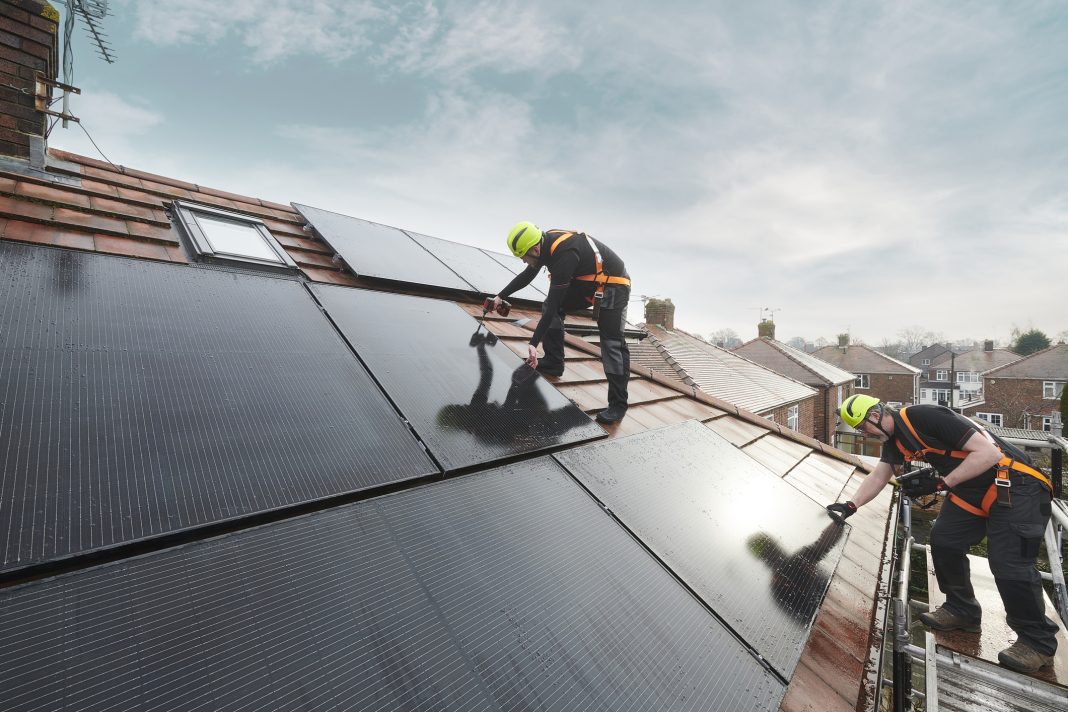Rick Hartwig, built environment lead at the Institution of Engineering & Technology, examines the business and social case for the decarbonisation of buildings, and what industry and government need to do to support the transition to net zero
To reach the UK’s net zero carbon emissions target by 2050, it involves every part of the economy. There is no route to net zero without drastically cutting the carbon emissions from our homes.
Emissions from housing come in two forms: carbon embodied in the materials and energy used to build, renovate and demolish homes; and carbon from the energy used daily.
Half of the lifetime carbon footprint comes from materials and construction (embodied carbon) and half from daily energy needs (operational carbon).
Those daily energy needs account for 80Mt CO2 equivalent each year – which is 18% of the UK’s total emissions. Space and hot water heating (mostly gas) account for 64Mt, with 16Mt carbon emissions coming from the electricity supply.
Decarbonising buildings requires making low-carbon heating more accessible
Reaching net zero means eliminating or offsetting both embodied and operational emissions. Since the electricity supply is rapidly decarbonising, providing low-carbon heating and cutting embodied carbon is the key challenge.
Electrification and heat pumps will be the principal source of low-carbon heating and as we switch from gas, we need a lot more renewable electricity. So, improving the energy efficiency of homes is essential.
There are enough prototypes and demonstrators to show we can deliver excellent energy efficiency in new build properties and retrofitting older properties. There are proven examples for terraces, low and high-rise apartment blocks, and individual homes.
We can also cut embodied carbon through factory manufacturing, using more sustainable materials like timber, cutting waste and recycling materials.
A side benefit of the decarbonisation of buildings is a reduction in energy demand, which proactively supports the decarbonisation of the grid.
Industry innovation, policy support
We can deliver homes ready for net zero but not in sufficient volume, fast enough or cost-effectively. We need industrial innovation and a supportive policy environment to speed upnet zero the transition. Technology push and market/policy pull – a collaborative effort.
This demands a fundamental change for the housing industry. We must change housing design, materials, construction and home energy management – all at the same time.
Fortunately, we have already overcome most of the fundamental technical challenges. However, we need to both scale up the supply chain and ensure that its application can be scaled down and affordable for a single home.
Hundreds of innovations from large and small companies are ready for scale-up and use. Ideas to reduce cost, improve performance and make solutions easier to manufacture, install and maintain. But they also need supportive policies to break through.
Planning needs radical reform
The Climate Change Committee 2023 interim report is clear: “While we are making progress, we are not doing enough and are showing a lack of urgency.”
The CCC calls for immediate priority actions and policies that will deliver on the net zero ambition. A notable call is for planning policy, which needs radical reform to support net zero.
The government needs to set clear policy objectives for housing that will deliver net zero. Policies must be consistent and long-term, lasting far longer than a single government.
They must have social housing sector, local government and cross-party support. Policy should specify outcomes, not specific solutions, to leave space for innovation. The use of clear standards will help, for example, mandating PAS 2035 for retrofit projects and making EPCs a more accurate predictor of real-life carbon emissions.
Alongside policy demand, innovation funding, especially early-stage development, can encourage businesses to bring new products and services to market and support early adoption.
This is a win-win-win for society, industry and government. Concerns about climate change and cost of living are addressed with practical, cost-effective solutions.
New business opportunities generate jobs, green growth and regional economic activity that support levelling up and a just transition. Energy security is likewise increased.
All these benefits will drive public buy-in to the net zero transition. Just as with offshore wind power, collaboration between government and industry will reduce costs making low-carbon homes the natural choice.
To find out more, please visit: Decarbonising the built environment (theiet.org).
Rick Hartwig
Built environment lead
Institution of Engineering & Technology
Tel: +44 (0)1438 313 311














